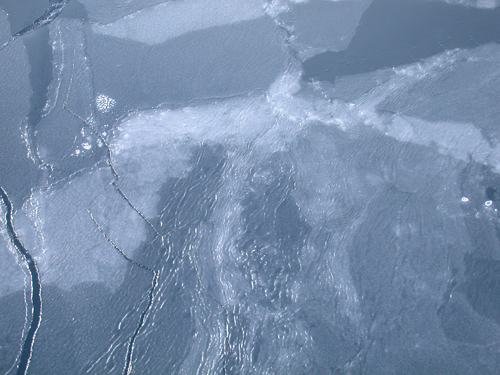|
||
 |
||
On relatively calm waters, one of the first forms of ice to form is this slimy looking ice called nilas. Photo courtesy Rolf Gradinger. |
|
||
 |
||
On relatively calm waters, one of the first forms of ice to form is this slimy looking ice called nilas. Photo courtesy Rolf Gradinger. |